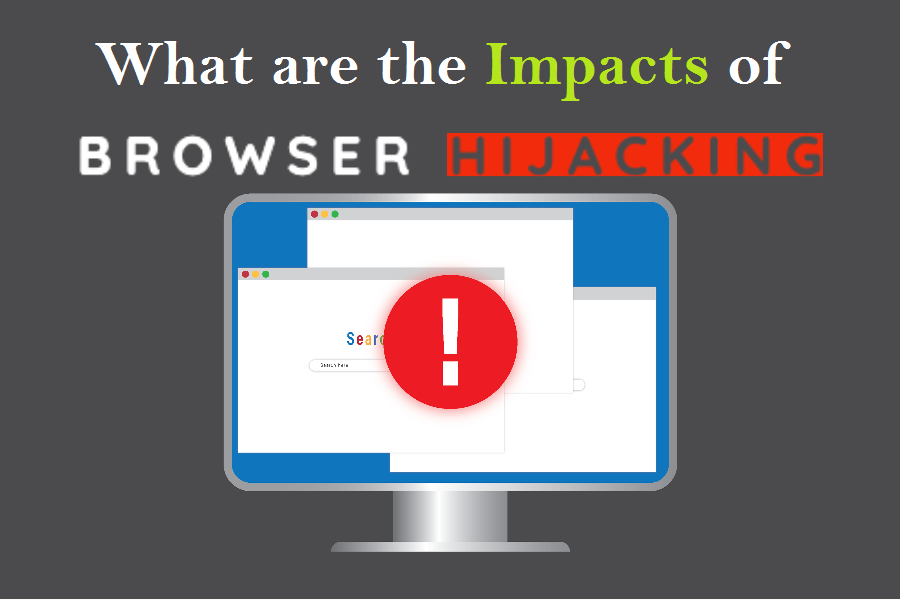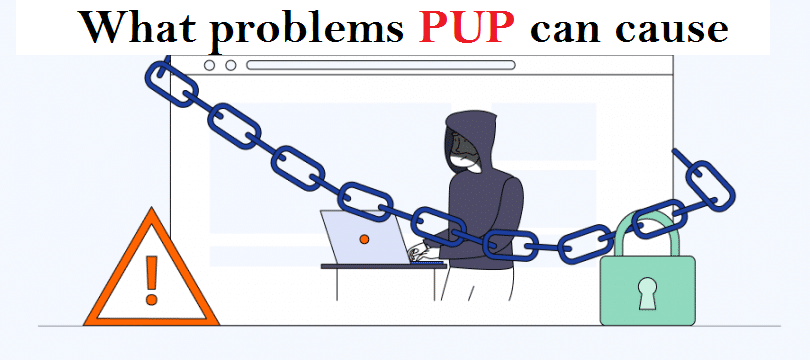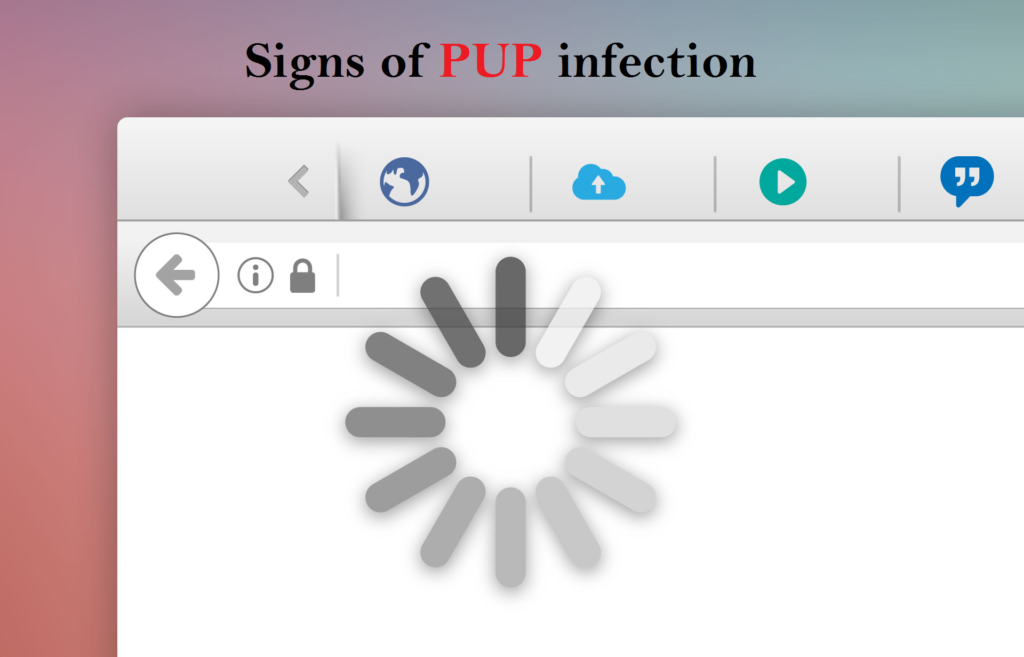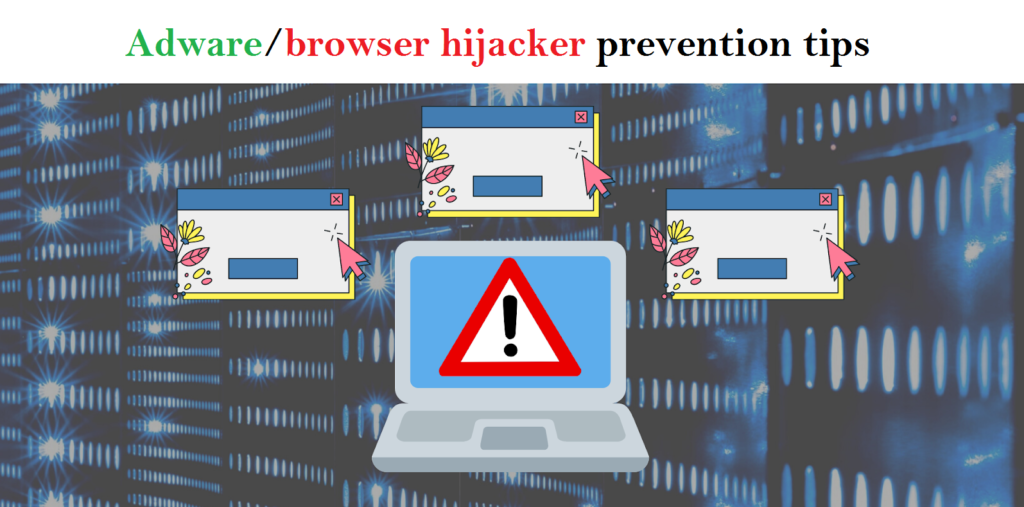Don’t Get Trapped by the Fake Amazon clearance sales
Fake Amazon clearance sales Overview
Amazon, the giant of online shopping, has become a target for tricksters. Imagine you’re scrolling through social media, and you come across what seems like an incredible Amazon clearance sale – discounts as massive as 90%! Sounds too good to be true? Well, it probably is.
Fraudsters are playing a clever game, creating fake Amazon websites that look so much like the real deal. They use these sites to advertise mind-boggling discounts, luring unsuspecting shoppers. Here are some red flags to watch out for:
- Crazy Discounts: If you see discounts reaching 90%, it’s a sign to be cautious. While we all love a good deal, extreme markdowns should set off alarm bells.
- Strange URLs: Check the website address carefully. Fraudsters often use URLs that resemble Amazon’s but with subtle differences. If it doesn’t exactly match the real Amazon site, step back.
- Language Mistakes: Keep an eye out for poor grammar or spelling errors on the website. Legitimate sites like Amazon are meticulous about their content. If it looks unprofessional, it’s likely a scam.
- Customer Service Red Flags: Legitimate companies have working customer service numbers and physical addresses. If you can’t find these details or they seem fishy, don’t proceed.
Now, let’s talk about the disappointment awaiting those who fall for these scams:
- Vanishing Orders: You place an order, pay for it, and poof! Nothing happens. Your purchased items never arrive because these scammers never intended to ship them in the first place.
- Shoddy Knockoffs: In some cases, victims receive packages, but the excitement turns into frustration. Instead of the high-quality products shown online, they get cheap knockoffs made from subpar materials.
- Used and Damaged Goods: The rarest of outcomes – you get the actual product, but it’s not what you expected. Clothing might be stained, devices damaged, or food packages tampered with. It’s like a cruel twist in the tale.
Beyond stealing your money, these scams can also lead to identity theft. When you provide personal and financial information during checkout, scammers snatch it up for more fraudulent activities.
How Fake Amazon clearance sales Scam Traps Users
Picture a group of sneaky schemers sitting far away, plotting a grand heist on online shoppers using fake Amazon sales. They’re like digital artists, creating websites that look so much like Amazon that you’d never suspect a thing. Here’s how they manage to trick unsuspecting folks:
These crafty crooks set up shop overseas, creating websites that are like Amazon’s mirror image. They copy everything – the logo, fonts, product displays, and even the Buy Box. But they play a sly game, changing the website addresses just a bit, like using “.store” or “.shop” instead of the regular “.com.”
To lure people into their web of deceit, they go big on social media. You’ll find their ads on Facebook, Instagram, and TikTok, shouting about mind-blowing discounts. Messages like “Store closing clearance!” or “Amazon warehouse shutting down – 90% off everything!” sound urgent and tempting. The links in these ads, though, lead to the tricksters’ websites, not the real Amazon.
Imagine clicking on one of these ads, expecting to land on Amazon’s site, and poof! You’re in a fake store. Everything looks like a mega clearance sale with insane discounts – phones, game consoles, and appliances priced at $5, $10, or $25. It seems like a steal, right? But here’s the trick – they show high “retail” prices to make you think it’s a legit limited-time sale.
Now comes the risky part – checkout. The fake Amazon sites demand loads of personal info: your full name, home address, phone number, credit card details, security codes, and expiration dates. Instead of going to Amazon, this goldmine of info goes straight to the crooks, setting the stage for future fraud like identity theft.
But the cruel reality hits after checkout. Victims soon realize they’ve been duped – purchases never arrive, or if they do, it’s a disaster. Cheap knockoffs, used or damaged goods, or completely wrong items show up at their doorstep.
Now, imagine being left empty-handed while the fraudsters not only have your money but also all your sensitive personal data. It’s not just a financial loss; it opens the door to more trouble down the line.
Identifying Fraudulent Amazon Clearance Websites
If you’re ever suspicious about a website claiming to offer incredible deals, just take a closer look – the shoddy designs often spill the beans. Check for English mistakes; if the product info or policies have abundant errors, it’s likely a foreign fraud ring behind it.
Fake sites might have URLs that look like Amazon’s, but a quick check of their creation dates using domain lookup tools can reveal their true nature, especially if they’re recently made in 2021 or later.
Look at the product images – if you see winter jackets on bikini models or strange pairings like smartwatches with cement bags, something’s fishy. Also, if you spot bizarre items like lobster bibs with a 90% discount, it’s a clear sign of a scam.
Pay attention to logos and branding; scammers often use copyrighted Amazon elements, but if you look closely, you might notice differences in logo proportions, font spacing, or color codes. Sloppy editing can expose their attempt at trademark theft.
So, when shopping online, keep an eye out for these red flags – they can help you steer clear of fake sites and protect yourself from scams.
Spotting Amazon Clearance Scam Ads on Social Media
Be on the lookout for tricky Amazon clearance scams lurking on popular platforms like Facebook, Instagram, and TikTok. These fraudsters are getting sneakier, but if you know what to watch for, you can spot them a mile away.
Instagram Scam Signs:
On Instagram, scammers pretend to be legit brands, boasting high follower counts. But here’s the catch – if they have lots of followers but barely any likes or comments, it’s a red flag. Also, pay attention if they’re pushing you to click on Linktree connections in their profile – that’s a trick to take you off-site. If you see captions shouting about a 90% off clearance event and urging you to shop ASAP, be cautious. These are classic tactics scammers use to pressure you into quick purchases.
Facebook Scam Warnings:
Facebook, being massive, is a hotspot for clearance sale scams. Look for posts marked “Sponsored” – that’s a clear sign of a scam. Check the URLs – if they’re using strange shorteners or leading you elsewhere, be suspicious. Watch out for clickbait wording like “Going out of business!” or “Just launched!” Also, if you can’t comment on the post because comments are blocked, it’s fishy. Real Amazon posts use genuine product images, not generic clearance photos.
TikTok Scam Signals:
On TikTok, the scammers play with the viral format to reach a huge audience fast. Look out for accounts with names like “@amazonmegaclearance” – they’re likely impostors. If you see generic warehouse footage instead of actual products, it’s a scam. Pay attention to captions displaying scam site URLs. And if you can’t ask questions because comments are disabled, beware.
Regardless of the platform, keep an eye out for these consistent red flags. Before you get click-happy on those ads, double-check their legitimacy. Stay sharp, and don’t let these scams trick you into a clearance catastrophe.
Things to do if fallen victim to the Fake Amazon clearance sales:
If you have been deceived by the Fake Amazon clearance sales, it is crucial to promptly safeguard yourself and your finances. Follow these steps to mitigate the impact of the scam and protect your assets:
- Notify the Federal Trade Commission (FTC) about the scam by visiting their website at https://reportfraud.ftc.gov/. Additionally, consider lodging a complaint with your state attorney general’s office or local consumer protection agency to ensure appropriate action is taken against the scammers.
- File a report about the scam with the Internet Crime Complaint Center (IC3) through their website at https://www.ic3.gov/. The IC3 is a collaborative effort between the FBI and the National White Collar Crime Center, dedicated to collecting and assessing complaints related to online fraud.
- Submit a report to Facebook, Instagram, or TikTok and mark the ads as misleading or deceptive.
- Reach out to your bank or credit card company without delay and inform them about the fraudulent transaction. Request the cancellation of your card and the issuance of a new one. Explore the possibility of disputing the charge to secure a potential refund.
- Immediately update your passwords and PINs for all your online accounts, particularly if you have used the same credentials on the fraudulent website. This ensures added security and minimizes the risk of unauthorized access.
- Regularly keep an eye on your credit reports and bank statements to detect any signs of suspicious transactions or unauthorized charges.
- If you have concerns about malware infecting your device, conduct a scan using the SpyHunter 5 Anti-Malware software for potential threats.
Threat Summary |
| Name: Fake Amazon clearance sales |
| Category: Scam |
| Features: Aims to deceive users into providing their personal and sensitive information like credit card details, address, phone number, and social security number. |
| Danger Level: Medium |
| Damage: Victims may have severe consequences, such as identity theft, fraud, and other malicious activities. |
|
Symptoms: The unwanted application can cause several adverse effects, such as displaying intrusive pop-up ads and slowing down internet browsing. The threat can manipulate the settings of an internet browser. This manipulation forces users to visit the hijacker’s website and conduct internet searches using their search engine. |
|
Distribution: Browser hijackers or adware such as Fake Amazon clearance sales can spread through deceptive pop-up ads, free software installers that are bundled with malware, and fake Flash Player installers. |
|
Removal: To remove the threat, scan your system with powerful SpyHunter anti-malware software |
What is the purpose of Fake Amazon clearance sales?

The purpose of adware or browser hijacker is to generate revenue through targeted advertising. It collects user data, such as browsing habits and preferences, to deliver personalized ads. By bombarding users with ads, the unwanted program aims to increase the chances of users clicking on them, leading to potential revenue for its developers.
While adware is primarily an annoyance and can compromise user privacy, it is often a means for companies to monetize free software and services without directly charging users. The primary objective of a browser hijacker is to promote certain websites, generate traffic, and potentially earn revenue through advertising or other means by exploiting the user’s browsing experience without their consent.
How does PUP end up on users’ devices?

Devices can fall victim to browser hijackers or adware through the download of infected files, malevolent email attachments, or visits to compromised websites. These hijacking tools may be bundled within browser extensions or included as part of software packages. Additionally, browser based threats can stem from shareware, freeware, or spyware infections, further expanding their potential sources of origin.
Potentially unwanted programs like Fake Amazon clearance sales often find their way onto users’ devices unintentionally, as users can be deceived into unknowingly downloading them. This can occur when users agree to an extra download mentioned in the terms and conditions of software installation. Another tactic involves misleading users with a choice to decline the installation of the browser hijacker software, but the wording deliberately confuses them, resulting in the inadvertent download. Once installed, PUP initiates its malicious actions by manipulating the user’s browser activities through embedded malevolent code.
What are the impacts of Fake Amazon clearance sales infection?

Browser hijacking refers to the unauthorized modification of web browser’s settings or behavior by malicious software or websites. It can have various impacts on users and their browsing experience. Here are some common impacts of browser hijacking:
- Altered homepage and search engine: Hijackers often change the default homepage and search engine settings of a browser to redirect users to a different website. This can disrupt the user’s browsing routine and make it challenging to find the desired information.
- Unwanted browser extensions: Browser hijackers or adware may install malicious or unwanted browser extensions without the user’s consent. These extensions can inject ads, track browsing activities, or collect personal information, compromising primacy and security.
- Increased exposure to ads: Hijacked browsers often display an excessive number of pop-up ads, banners ads, or in-text ads. This flood of advertisements not only annoys users but can also slow down browsing speed and consume bandwidth.
- Tracking and data collection: Browser-based infections like Fake Amazon clearance sales employ tracking mechanisms to monitor users’ online activities, including websites visited, search queries, and personal information entered on web forms. This information can be used for targeted advertising or sold to third-parties without the user’s consent.
What problems Fake Amazon clearance sales can cause?

This undesirable application can cause instability in web browsers by modifying critical settings, introducing incompatible software, or consuming system resources. Users may experience frequent crashes, slow performance, or unresponsiveness while browsing. In more severe cases, browsing hijacking can lead to unauthorized access to online accounts. PUPs may attempt to steal login credentials, financial information, or other sensitive data, putting users at risk of identity theft or fraud.
Furthermore, browser hijacking can be a part of a larger malware infection. In such cases, adware or hijacker may serve as a gateway for other malicious software, such as ransomware, keyloggers, or spyware, further compromising the user’s system and data. Also, browser-based threats with data collection abilities can cause severe problems. They can gather sensitive information such as login credentials, financial data, and personal details, leading to identity theft and fraud. The collected data may also be sold to third parties, compromising user privacy. Additionally, targeted advertising based on the collected information can result in a flood of intrusive and potentially malicious ads.
How can I know if I have an adware or browser hijacker?

If you have an adware or browser hijacker, such as Fake Amazon clearance sales installed on your device, you may notice a few clear indications. Users need to exercise caution if they encounter any of the following signs, as it could suggest their system is compromised.
- If users find that their default homepage or preferred search engine has been substituted without their authorization, they should be on high alert.
- If users notice that their search queries are being rerouted to unfamiliar websites, it’s important for them to be cautious and aware of this redirection behavior.
- When users are bombarded with an excessive number of intrusive pop-up ads appearing frequently, they should be cautious and wary of the abundance of unsolicited advertisements.
- If users experience delays in the loading of webpages, where the content takes an unusually long time to appear, it is important for them to remain vigilant and take note of this sluggish performance.
- Should users notice the sudden appearance of unauthorized toolbars on their internet browser, it is crucial for them to exercise caution and be mindful of these unapproved additions.
Special Offer (For Windows)
Fake Amazon clearance sales can be creepy computer infection that may regain its presence again and again as it keeps its files hidden on computers. To accomplish a hassle free removal of this malware, we suggest you take a try with a powerful Spyhunter antimalware scanner to check if the program can help you getting rid of this virus.
Do make sure to read SpyHunter’s EULA and Privacy Policy. Spyhunter free scanner downloaded just scans and detect present threats from computers and can remove them as well once, however it requires you to wait for next 48 hours. If you intend to remove detected threats instantly, then you will have to buy its licenses version that will activate the software fully.
Special Offer (For Macintosh) If you are a Mac user and Fake Amazon clearance sales has affected it, then you can download free antimalware scanner for Mac here to check if the program works for you.
Antimalware Details And User Guide
Click Here For Windows Click Here For Mac
Important Note: This malware asks you to enable the web browser notifications. So, before you go the manual removal process, execute these steps.
Google Chrome (PC)
- Go to right upper corner of the screen and click on three dots to open the Menu button
- Select “Settings”. Scroll the mouse downward to choose “Advanced” option
- Go to “Privacy and Security” section by scrolling downward and then select “Content settings” and then “Notification” option
- Find each suspicious URLs and click on three dots on the right side and choose “Block” or “Remove” option

Google Chrome (Android)
- Go to right upper corner of the screen and click on three dots to open the menu button and then click on “Settings”
- Scroll down further to click on “site settings” and then press on “notifications” option
- In the newly opened window, choose each suspicious URLs one by one
- In the permission section, select “notification” and “Off” the toggle button

Mozilla Firefox
- On the right corner of the screen, you will notice three dots which is the “Menu” button
- Select “Options” and choose “Privacy and Security” in the toolbar present in the left side of the screen
- Slowly scroll down and go to “Permission” section then choose “Settings” option next to “Notifications”
- In the newly opened window, select all the suspicious URLs. Click on the drop-down menu and select “Block”

Internet Explorer
- In the Internet Explorer window, select the Gear button present on the right corner
- Choose “Internet Options”
- Select “Privacy” tab and then “Settings” under the “Pop-up Blocker” section
- Select all the suspicious URLs one by one and click on the “Remove” option

Microsoft Edge
- Open the Microsoft Edge and click on the three dots on the right corner of the screen to open the menu
- Scroll down and select “Settings”
- Scroll down further to choose “view advanced settings”
- In the “Website Permission” option, click on “Manage” option
- Click on switch under every suspicious URL

Safari (Mac):
- On the upper right side corner, click on “Safari” and then select “Preferences”
- Go to “website” tab and then choose “Notification” section on the left pane
- Search for the suspicious URLs and choose “Deny” option for each one of them

Manual Steps to Remove Fake Amazon clearance sales:
Remove the related items of Fake Amazon clearance sales using Control-Panel
Windows 7 Users
Click “Start” (the windows logo at the bottom left corner of the desktop screen), select “Control Panel”. Locate the “Programs” and then followed by clicking on “Uninstall Program”

Windows XP Users
Click “Start” and then choose “Settings” and then click “Control Panel”. Search and click on “Add or Remove Program’ option

Windows 10 and 8 Users:
Go to the lower left corner of the screen and right-click. In the “Quick Access” menu, choose “Control Panel”. In the newly opened window, choose “Program and Features”

Mac OSX Users
Click on “Finder” option. Choose “Application” in the newly opened screen. In the “Application” folder, drag the app to “Trash”. Right click on the Trash icon and then click on “Empty Trash”.

In the uninstall programs window, search for the PUAs. Choose all the unwanted and suspicious entries and click on “Uninstall” or “Remove”.

After you uninstall all the potentially unwanted program causing Fake Amazon clearance sales issues, scan your computer with an anti-malware tool for any remaining PUPs and PUAs or possible malware infection. To scan the PC, use the recommended the anti-malware tool.
Special Offer (For Windows)
Fake Amazon clearance sales can be creepy computer infection that may regain its presence again and again as it keeps its files hidden on computers. To accomplish a hassle free removal of this malware, we suggest you take a try with a powerful Spyhunter antimalware scanner to check if the program can help you getting rid of this virus.
Do make sure to read SpyHunter’s EULA and Privacy Policy. Spyhunter free scanner downloaded just scans and detect present threats from computers and can remove them as well once, however it requires you to wait for next 48 hours. If you intend to remove detected threats instantly, then you will have to buy its licenses version that will activate the software fully.
Special Offer (For Macintosh) If you are a Mac user and Fake Amazon clearance sales has affected it, then you can download free antimalware scanner for Mac here to check if the program works for you.
How to Remove Adware (Fake Amazon clearance sales) from Internet Browsers
Delete malicious add-ons and extensions from IE
Click on the gear icon at the top right corner of Internet Explorer. Select “Manage Add-ons”. Search for any recently installed plug-ins or add-ons and click on “Remove”.

Additional Option
If you still face issues related to Fake Amazon clearance sales removal, you can reset the Internet Explorer to its default setting.
Windows XP users: Press on “Start” and click “Run”. In the newly opened window, type “inetcpl.cpl” and click on the “Advanced” tab and then press on “Reset”.

Windows Vista and Windows 7 Users: Press the Windows logo, type inetcpl.cpl in the start search box and press enter. In the newly opened window, click on the “Advanced Tab” followed by “Reset” button.

For Windows 8 Users: Open IE and click on the “gear” icon. Choose “Internet Options”

Select the “Advanced” tab in the newly opened window

Press on “Reset” option

You have to press on the “Reset” button again to confirm that you really want to reset the IE

Remove Doubtful and Harmful Extension from Google Chrome
Go to menu of Google Chrome by pressing on three vertical dots and select on “More tools” and then “Extensions”. You can search for all the recently installed add-ons and remove all of them.

Optional Method
If the problems related to Fake Amazon clearance sales still persists or you face any issue in removing, then it is advised that your reset the Google Chrome browse settings. Go to three dotted points at the top right corner and choose “Settings”. Scroll down bottom and click on “Advanced”.

At the bottom, notice the “Reset” option and click on it.

In the next opened window, confirm that you want to reset the Google Chrome settings by click on the “Reset” button.

Remove Fake Amazon clearance sales plugins (including all other doubtful plug-ins) from Firefox Mozilla
Open the Firefox menu and select “Add-ons”. Click “Extensions”. Select all the recently installed browser plug-ins.

Optional Method
If you face problems in Fake Amazon clearance sales removal then you have the option to rese the settings of Mozilla Firefox.
Open the browser (Mozilla Firefox) and click on the “menu” and then click on “Help”.

Choose “Troubleshooting Information”

In the newly opened pop-up window, click “Refresh Firefox” button

The next step is to confirm that really want to reset the Mozilla Firefox settings to its default by clicking on “Refresh Firefox” button.
Remove Malicious Extension from Safari
Open the Safari and go to its “Menu” and select “Preferences”.

Click on the “Extension” and select all the recently installed “Extensions” and then click on “Uninstall”.

Optional Method
Open the “Safari” and go menu. In the drop-down menu, choose “Clear History and Website Data”.

In the newly opened window, select “All History” and then press on “Clear History” option.

Delete Fake Amazon clearance sales (malicious add-ons) from Microsoft Edge
Open Microsoft Edge and go to three horizontal dot icons at the top right corner of the browser. Select all the recently installed extensions and right click on the mouse to “uninstall”

Optional Method
Open the browser (Microsoft Edge) and select “Settings”

Next steps is to click on “Choose what to clear” button

Click on “show more” and then select everything and then press on “Clear” button.

How to prevent Fake Amazon clearance sales infection?

There are multiple measures to safeguard against browser hijacking or adware infection:
- Be cautious when downloading software. Browser-based parasite, such as Fake Amazon clearance sales often disguises itself as legitimate software, so carefully read all terms, conditions, and end user licensing agreements before downloading any programs.
- Avoid running freeware programs that may unpack software during installation. Prior to installing any software, review the download settings to ensure no unwanted software is included.
- Exercise caution when encountering suspicious links. Refrain from clicking on email links, messages, or pop-up boxes from unfamiliar senders, as they may trigger the download of browser hijackers or adware.
- Keep your operating system (OS) and browser up to date. Regularly applying OS and browser patches is vital to prevent hijacking attacks, as attackers often exploit known vulnerabilities. Updating software closes these potential entry points.
- Utilize antivirus software. Install reliable antivirus software and keep it updated with the latest patches. It offers protection against browser hijacking, notifying users in real-time if downloaded software attempts to modify browser settings. Certain antivirus software empowers users to block such alterations.
By following these steps, you can minimize the risk of potentially unwanted program intrusion and keep your PC system safe and secure.
Conclusion:
To sum up, Fake Amazon clearance sales can cause significant problems for computer users, including unwanted browser redirects, changes to homepage and search engine settings, and even the installation of additional malware. These infections typically result from downloading and installing software from untrusted sources or clicking on suspicious links. To prevent browser hijackers or adware, it is important to be cautious when downloading and installing software, use reputable antivirus tool, and keep browsers and operating systems updated with the latest security patches.
Related FAQs about Fake Amazon clearance sales
What are the Symptoms of Browser-hijacker (Fake Amazon clearance sales)?
The common symptoms of Fake Amazon clearance sales infection include changes to the default homepage and search engine, unwanted toolbars and extensions, pop-up ads, and redirects to unfamiliar websites. Additionally, the browser may slow down or crash frequently, and search results may be manipulated or irrelevant to the query.
What Should I do if my PC gets infected with virus like Fake Amazon clearance sales?
If your computer is infected with this browser-based threat, you should immediately run a virus scan using reputable antivirus software. If the software detects the malware, you should follow the removal instructions provided by it to eliminate the infection and restore your browser settings to default.
How can I protect my password and other personal credentials from Fake Amazon clearance sales?
To protect your password and other sensitive information from Fake Amazon clearance sales, you should employ reputable antivirus suite, enable two-factor authentication on all accounts, and use strong and unique passwords for each account. Also, you should avoid clicking on suspicious links or downloading software from untrusted sources.
Why I should trust your research conducted on Fake Amazon clearance sales?
It’s important to mention that our research is conducted independently and with the assistance of unbiased security experts, who provide us with daily updates on the latest definitions and threats related to malware, adware, and browser hijackers. Moreover, our study on the Fake Amazon clearance sales threat is supported by VirusTotal.
Special Offer (For Windows)
Fake Amazon clearance sales can be creepy computer infection that may regain its presence again and again as it keeps its files hidden on computers. To accomplish a hassle free removal of this malware, we suggest you take a try with a powerful Spyhunter antimalware scanner to check if the program can help you getting rid of this virus.
Do make sure to read SpyHunter’s EULA and Privacy Policy. Spyhunter free scanner downloaded just scans and detect present threats from computers and can remove them as well once, however it requires you to wait for next 48 hours. If you intend to remove detected threats instantly, then you will have to buy its licenses version that will activate the software fully.
Special Offer (For Macintosh) If you are a Mac user and Fake Amazon clearance sales has affected it, then you can download free antimalware scanner for Mac here to check if the program works for you.




